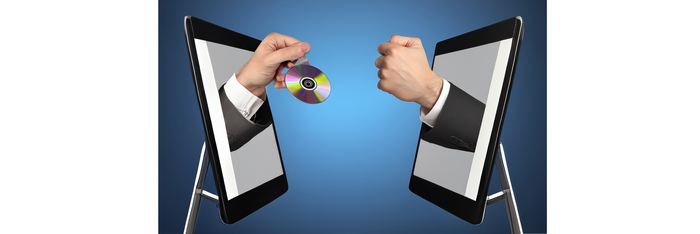The right strategy, the right tactics
So, it’s that time again. Your company’s CAD software license is coming up for renewal, and it’s your job to strike a deal.
About the author - Don Rekko
CAD software is well known for being among the most expensive kinds of business technology out there. Compared to common business technology like Microsoft 365, where licenses will set you back about $100 per user/year, many CAD programmes can cost 25 or even 50 times as much.
Going into license negotiations with an effective strategy is therefore vital - and can save your firm tens of thousands of dollars. The trouble, however, is that many buyers have limited experience of negotiating deals for CAD software, and this means it's common for them to pay far more than necessary.
I have over 20 years of experience working for CAD software firms, and have experience on both the buying and selling side. In this blog, I hope to share knowledge and tips gleaned from more than two decades in the industry as well as from academic study and negotiation training I’ve delivered to hundreds of buyers and sellers in our industry.
My goal is to help you enter negotiations with vendors with greater confidence and to come away with the best price for your business.
9 things to know when entering CAD software negotiations
If you want to strike a fair deal, you need a combination of strategy and tactics. In the first half of this blog, I’ll describe four key strategic concepts you should be aware of when negotiating. In the second half of the blog, I’ll describe five specific tactics you can use to put the theory into practice.
So, let’s dive right in.
The 4 strategic considerations when buying CAD software
As part of your preparation for entering into negotiations, take some time to think about the following strategic considerations. They will help guide your counter offers, and mean you can go into the conversation with a plan.
1. Understand the actors and their interests
One of the most important aspects of any price negotiation is to understand who’s who and what their interests are. In any business deal, there will be at least four actors involved (and there are usually quite a few more), as the following table shows:
|
CAD vendor
|
CAD buyer
|
|
The principal: This actor is typically a senior employee at a CAD company. They have the final say on pricing. In most CAD companies, it’s the head of sales - though it could plausibly be the CEO, founders, etc. They’re motivated by profitability and, if they’re a public company, by share price.
|
The principal: This actor is typically the CFO at an architecture, engineering or design firm. But it could also be the CEO, end users, or IT employees. They want to minimize costs.
|
|
The agent: The vendor’s agent in CAD negotiations is typically a salesperson. They’re usually motivated by quarterly targets.
|
The agent: The buyer’s agent could be someone in the procurement department of larger firms, or it may be the head of operations. They’re motivated to get the lowest price possible in a deal.
|
In most CAD pricing negotiations, the agents conduct most of the communication itself. But their principals will often make the final decision.
As the buyer’s agent, it’s important to ascertain who is the principal on the vendor’s side but also what the vendor’s agent’s motivations are. For example:
-
If it’s close to the end of the financial quarter and the vendor’s agent hasn’t hit their sales targets, you can push for a better deal.
- If you know the principal has just landed a major investment into their company, they may be less inclined to accept lower offers.
2. Understand ZOPA
The Zone Of Possible Agreement (ZOPA) refers to the range of prices within which a mutually acceptable agreement can be reached between two parties. It represents the overlap between the buyer's and seller's highest and lowest acceptable prices respectively. Naturally enough, vendors want to sell at the highest price, buyers want the lowest price.
As a buyer of CAD software, it’s important to know your absolute maximum price (the ‘walk away’ point where you wouldn’t pay a dollar more) and your ‘dream’ stretch price. Somewhere between those extremes would be your ‘realistic’ price. Your vendor will also have a minimum ‘walk away’ price and a ‘dream’ maximum stretch price. The ZOPA is where those prices cross over.

The art of CAD software negotiation is to estimate your counterparty’s walk away price, so you can make offers and counter offers which will be as close as possible to your stretch price, but barely acceptable for the vendor.
3. Make use of BATNA
When you enter into a sales negotiation, it’s very helpful to know your Best Alternative to a Negotiated Agreement (BATNA). Essentially, your BATNA is a good alternative deal you could go for if the CAD software vendor refuses to budge on price. It gives you more leverage in a negotiation, because it’s a decent option that you could plausibly go for.
Depending on your situation, your BATNA could be:
- Carrying on with the CAD software you’re already using
- Buying CAD software from similar vendors who offer cheaper licenses
BATNA should be used with caution, however, and your alternatives should be serious options. Any good salesperson will know when you’re ‘bluffing’. If they realize you aren’t serious about using an alternative, they’re highly unlikely to budge on price. Fundamentally, if you don’t have a BATNA you’d genuinely be willing to go for, then it’s unwise to pretend you have one - and you could end up feeling embarrassed.
4. Getting creative with tradeoffs
Vendors will sometimes be willing to offer lower prices if you’re happy to offer certain tradeoffs that may cost you very little - but which could be valuable for them. These include things like offering to become a reference customer or helping to produce case studies or other marketing material in return for lower fees.
You could also forego some of the common ‘extras’ that come with CAD software in return for a lower price. For example, training may be provided as standard with the software - but if you’re confident you don’t need it, the vendor may be open to offering a lower price since this will save them a few days of work.
5 tactical tools for CAD software negotiations
The strategic considerations I’ve outlined above should help guide your overall negotiating strategy. You can then use the following ‘tactics’ when engaging with CAD software sales people.
I’ve borrowed from author Chris Voss’s notion of ‘tactical empathy’, described in his bestseller Never Split the Difference: Negotiating as if Your Life Depended on It, to outline a variety of questions and tactics buyers can use when purchasing CAD software. Voss, a former FBI hostage negotiator, emphasizes the importance of empathy in high-stakes negotiations. Tactical empathy involves understanding the perspective and emotions of the other party in a negotiation to build rapport, gain information, and ultimately influence the outcome of the negotiation.
1. Use deep listening and mirroring techniques to build rapport and understand the vendor's constraints
Deep listening is a form of highly active listening where the listener repeats back words the speaker uses to demonstrate they’re engaged with what their interlocutor is saying. It’s the most engaged form of listening, and can be understood by comparison to less active styles:
|
Listening type
|
Example
|
|
Cosmetic listening: Your mind is elsewhere and you’re only partly engaged.
|
Your interlocutor tells you they just went on vacation to Florida. You respond with: “uh huh”.
|
|
Conversational listening: You are engaged in the conversation, and are going through a listening, talking, thinking, talking process.
|
Your interlocutor tells you they just went on vacation to Florida. You respond with: “Oh neat, I just went on vacation to Maine”.
|
|
Active listening: You’re very focused on what is being said, you pay attention, reflect back and summarize.
|
Your interlocutor tells you they just went on vacation to Florida. You respond with: “How nice! What was your favorite thing about the trip?”.
|
|
Deep listening: You are listening in an empathic way, and notice non-verbal signals and the content of words.
|
Your interlocutor tells you they just went on vacation to Florida. You notice their tone of voice appears unenthused, so you respond: “Florida sounds nice, but perhaps it wasn’t quite what you expected?”.
|
In CAD software negotiations, you could use the deep listening technique in multiple ways when speaking to the vendor’s salespeople and principal. It’s about making them feel heard and understood, so they open up and ultimately share more than they would with a customer who seems only interested in themselves. Be perceived as some who really ‘gets’ them - not as an adversary who just wants to bludgeon them into price submission.
2. Use labels to steer the negotiation favorably
Applying a label to your interlocutor’s behavior or statements can be a powerful tool in CAD software negotiations. Using a label means that, rather than responding in anger, frustration or annoyance to a negotiator, you label (what you perceive as) their emotions. Applying a label to your interlocutor’s behavior or statements can be a powerful tactic in CAD software negotiations and can be used in many ways.
A label starts with phrases such as:
- “It seems like…”
- “It feels like…”
- “It sounds like…”
For example, say the salesperson is not offering further discounts. How would you solve this check-mate, without destroying all the goodwill you just built up?
This is where labels can work miracles. Try using labelling as follows: “it seems like you're powerless”. Then let the label sink in. The ball is now back in the salesperson’s court, and they’re forced to think how to respond.
3. Use calibrated questions
Calibrated questions are open-ended questions that typically start with words like ‘what’ or ‘how’. The are "calibrated" to get your negotiation partner see the world from your perspective. They also help keep the conversation flowing, and mean you can gather more information. Compare the following examples:
|
Situation
|
Calibrated questions and outcomes
|
Non-calibrated equivalent
|
|
You believe you’re being given the ‘list price’.
|
Question: How is this a fair price compared with other customers?
Outcome: Pushes the vendor to provide more information. Assuming they're honest, they will acknowledge that other customers pay less.
|
Question: Is this the usual price?
Outcome: The salesperson can honestly say ‘yes’ because this is the correct list price. The conversation won’t progress any further.
|
4. The power of ‘no’
Getting your interlocutor to say the word ‘no’ can be a very effective technique in CAD software negotiations. Psychologically, saying the word ‘no’ gives them a sense of control. You can then use this to gather information and advance the deal in your favor.
Compare the following two examples to see the different results it produces:
-
Question designed to elicit a ‘yes’: Can you give me a 10% discount on the list price?
What’s wrong with this? The salesperson may say yes, but it’s more likely they’ll reply with a ‘no’ - this gives them that sense of control. As a result, the conversation doesn’t progress further.
-
Question designed to elicit a ‘no’: Would it be outrageous to ask for a 10% discount on the list price?
Why does this work? The salesperson is more inclined to say the word ‘no’, and this gives you a clearer idea of what their limits are.
5. Use anchoring to your advantage
‘Anchoring’ is a very common sales tactic, whereby the salesperson will begin negotiations by throwing out a high - and somewhat arbitrary - number. Consequently, all other discussion then revolves around that number. In terms of ZOPA, the salesperson’s anchor is typically their ‘dream’ maximum price. The best counter to an anchor, is to re-anchor the conversation with a range, using your BATNA. Consider the following situation.
|
Situation (when you have done your homework):
- The salesperson’s ideal price would be $5,000 pr license, their lowest ‘walk away’ price would be $3,500
- Your ideal price would be $3,000, and your highest ‘walk away’ price would be $4,500
|
|
Without re-anchor
|
With re-anchor
|
|
If the salesperson anchors the conversation at $5000, you could end up trying to negotiate back from that.
You are now trying to move them away from the $5,000 but they’ll only budge by 10% - meaning you end up paying your very maximum.
You’ll have to do the hard work of justifying your ask for a much lower price. Even with a 20% discount, you’ll still be at $4000
|
If the salesperson anchors at $5000, reframe the conversation by pointing out that comparable vendors offer similar functionality in the range of $2000 - $3000.
This forces the salesperson to do the hard work of explaining why you should pay more than what their competitor is offering
You’ll have much better chances of getting at or slightly over the high end of your range ($3000).
|
Putting it all in practice
Let’s combine what you have learned so far and use it in the situation described above.
CAD license negotiations have plenty of potential to turn into conflict. You (and the CAD vendor) know that big sums are at stake, that it’s essential to preserve a working relationship, but that a low price for the customer is the exact opposite of what the salesperson is trying to achieve.
Opening moves - use mirroring and labels to get to deep listening.
To resolve any awkwardness early on, start mirroring and apply strong labels. Go way beyond the topic of the pricing negotiation. Now, come up with some great labels that show you deeply understand them (e.g., “it seems that raising your family is your first priority”). Signs that you’re doing a great job here are if you’re learning about the personal aspirations of the salesperson, their motives and objectives.
The offer - respond with labels
At some point after all this pleasantness, you’ll get down to business. Very likely, this part of the negotiation starts with the first offer from the CAD vendor - most likely verbal, and at the very high end of their range ($5,000 per seat, in our example).
The salesperson now braces for a sudden change in atmosphere, a significant pushback, and a more confrontational tone from you. Resist that urge, and count to 10 if you have to, and respond with a label, based on your gut feeling of the salesperson’s mood.
A good label could be: “it seems you know that the offer is not acceptable to us”. It’s important to say this gently, without any irony, sarcasm or frustration. If there’s no immediate response, either wait patiently or follow up with a second label, for example “It seems you’re not expecting a positive response on the offer”.
Counter offer - go for ‘no’
Most likely, you will not get a immediate nor meaningful concession to your label. But if you delivered the label well, the CAD salesperson will be relieved as you’re trying to keep it constructive. It’s now your turn, and your task is to re-anchor.
There’s a couple of ways to counter. Besides the label, you can use a calibrated question like “what justifies this price?”. But this would still mean you're trying to move the sales person away from the $5000 anchor. The recommended approach though is to counter with a “no” question that also unveils your BATNA:
“Vendor XYZ offers us comparable functionality for $2000. Including the implementation cost of migrating to XYZ, the price would be $3000 apples-to-apples. Is it unreasonable if I expect an offer in this $2000 - $3000 range?”
Coming to an agreement
A lot of things can happen from here on, depending on the savvy of the negotiation teams, the strength of the BATNA and the existence of a ZOPA. If you continue to prepare well for the negotiation and use tactical empathy consistently, you still may not always get what you want. But I can assure that this will yield the best possible outcome for your company, whilst preserving long term relationships and increased respect amongst your peers for your negotiation skills.
Put these strategies and tactics into play
When the time comes for you to renew your CAD software licenses, it’s so valuable to enter your negotiations with a clear strategy and to have tactics at hand which you can use when required. This will mean you’re far more likely to get a deal which suits your business and saves you money.
Use Designair to support your BATNA
Designair provides cloud-based virtual machines that allow you to test-drive as many different kinds of CAD software as you want. You can quickly install and launch free trials on our virtual machines and make a short list of products that meet your requirements.
Using Designair in this way helps you to build a stronger BATNA position. You’ll know which alternatives would actually be suitable for your company and could use them if your current vendor isn’t ready or willing to offer a better deal.
To learn more about Designair, and how you can use it to trial different CAD software, you can either get a free trial or schedule a meeting with Don today.
Improve your Tactical Empathy
Get a copy of Chris Voss’ bestseller Never Split the Difference: Negotiating as if Your Life Depended on It, to deepen your understanding of Tactical Empathy and get practical insight of how the FBI is using Voss’ experience in life-or-death negotiations. Then practice Voss’ theory so that you become “fluent” in these tactics.




